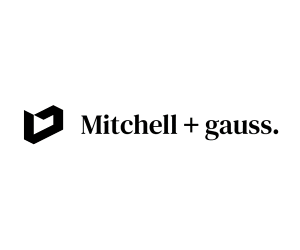Peter Ryder: Navigating the 2025 property landscape in Scotland

Peter Ryder
Peter Ryder discusses the outlook for Scotland’s property market in 2025 and what both buyers and sellers can expect.
As we look ahead to 2025, Scotland’s residential property market appears to be navigating a series of challenges and opportunities, with many factors contributing to a cautiously optimistic outlook for the year. The resilience of the market in 2024 offers a solid foundation, and there are reasons to believe that the trends witnessed last year will continue into the new year, albeit with some nuanced shifts.
The UK property market, including Scotland, enjoyed a robust performance in 2024, with expectations for continued growth in 2025. Transaction volumes in the UK exceeded 1.1 million for 2024, and it’s anticipated that this figure will increase further to 1.25 million in 2025. The Scottish market is in a similar position, with an uptick in both the number of properties for sale and the number of active buyers. This increased inventory, paired with heightened demand, is expected to maintain a competitive edge, particularly in Scotland’s more active regions.
This rise in transactions could, in turn, help to curb rampant price inflation, a challenge faced by many property markets in recent years. Predictions suggest that price growth in Scotland will remain moderate, with an expected inflation rate of around 2.5% in 2025. This relatively modest increase in property prices is beneficial for many buyers, as it provides more stability and predictability than the often-dramatic spikes witnessed during the peak of the pandemic-era housing boom.
One of the most positive aspects of the Scottish property market is the continuing prominence of first-time buyers. This group remains the largest segment of purchasers, comprising around 35% of all transactions. This is a sign of a healthy and dynamic market, as these buyers are often the lifeblood of property activity, stimulating movement across all sectors.
However, it’s important to note that many first-time buyers still rely heavily on parental support, with the so-called “Bank of Mum and Dad” continuing to play a significant role in securing deposits and providing financial assistance. This reliance on family funding remains an indicator of the challenges faced by young buyers in raising the necessary capital to enter the market.
Mortgage rates have undoubtedly had a significant impact on buyers’ behaviour in recent years, and 2025 is unlikely to be any different. Rates are expected to stabilise at around 4% by the end of 2025, a figure that is considered the threshold for many prospective homeowners. While this is an improvement on the high rates seen over the past couple of years, it still reflects the reality of a post-pandemic financial landscape. The days of sub-2% mortgage rates are well behind us, and this shift will continue to shape buyer sentiment in the year ahead.
Remortgaging will also be a major factor in 2025, particularly as many homeowners face the reality of higher payments when their five-year fixed rates, secured at around 2.5% in 2020, come to an end. Homeowners transitioning to new rates could see an increase in their monthly outgoings, with the average new five-year rate expected to rise to 4.9%. While those who took out two-year fixed-rate mortgages in 2023 may see a reduction in their monthly payments by 0.3% to 0.4%, rates are still likely to remain above 5%, continuing the financial strain for many households.
Another significant shift in the Scottish property market is the decline of landlords exiting the rental sector. Increased legislation, coupled with the rise in the Additional Dwelling Supplement (ADS) from 6% to 8%, has made property investment less attractive. As a result, landlords are scaling back their portfolios or leaving the market entirely. This trend is expected to persist into 2025, leading to a reduction in the supply of rental properties.
The consequences of this shift are already being felt across Scotland, with rents rising as demand outstrips supply. With fewer properties available to rent, prospective tenants are likely to face increased competition for available homes, driving up prices further.
Looking ahead, the Scottish property market is expected to remain active, with a moderate rise in transaction volumes and stable, if not spectacular, price growth.
![]()
Peter Ryder is managing director of estate agency at Thorntons









